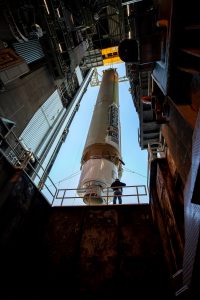
NASA and SpaceX are preparing to launch the final, major test before astronauts fly aboard the Crew Dragon spacecraft and Falcon 9 rocket to the International Space Station as part of the agency’s Commercial Crew Program. The test, known as in-flight abort, will demonstrate the spacecraft’s escape capabilities — showing that the crew system can protect astronauts even in the unlikely event of an emergency during launch. The uncrewed flight test is targeted for 8 a.m. EST Saturday, Jan. 18, at the start of a four-hour test window, from Launch Complex 39A in Florida.
SpaceX performed a full-duration static test Saturday, Jan. 11, of the Falcon 9 and completed a static fire of the Crew Dragon on Nov. 13 setting the stage for the critical flight test.
Prior to launch, SpaceX and NASA teams will practice launch day end-to-end operations with NASA astronauts, including final spacecraft inspections and side hatch closeout. Additionally, SpaceX and NASA flight controllers along with support teams will be staged as they will for future Crew Dragon missions, helping the integrated launch team gain additional experience beyond existing simulations and training events.
After liftoff, Falcon 9’s ascent will follow a trajectory that will mimic a Crew Dragon mission to the International Space Station matching the physical environments the rocket and spacecraft will encounter during a normal ascent.
Click here for the full story.



